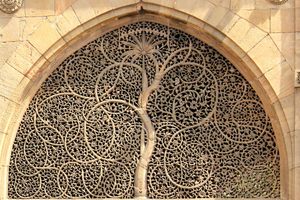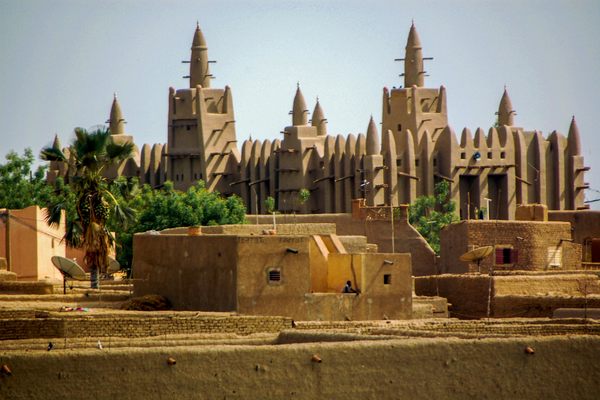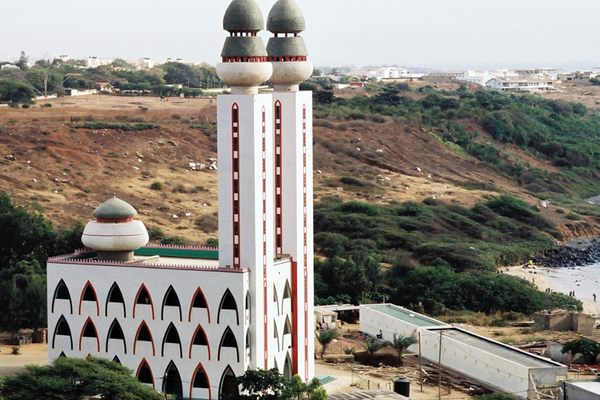About
Nearly 600 years after it was built, the Jama Masjid (Friday Mosque) in Ahmedabad, Gujarat, still stands unrivaled for its unique synthesis of diverse architectural traditions. Completed in 1424, the mosque displays an elegant fusion of Islamic, Hindu and Jain architectural elements and is unlike any other mosque in the Indian subcontinent.
Although the two principal minarets flanking the arched central entrance to the mosque collapsed in the earthquake of 1819, their lower portions survived. These exquisitely carved columns, remnants of the minarets, are one of the most striking features of the mosque. The designs carved on the columns are suggestive of elements of Hindu temple architecture. The mosque is also decorated with ornate jalis (latticed screens) carved in geometric and floral patterns (albeit not nearly as impressive as the ones in the Sidi Saiyyed Mosque).
The tasteful blend of diverse architectural traditions characteristic of the mosque is perhaps most visible in the design of its immense main prayer hall with 260 columns, curiously reminiscent of the interiors of a Hindu temple. During the period of the Gujarat Sultanate, Hindu temples were often dismantled and their architectural elements adapted into the construction of new mosques. Interestingly, this practice led to the development of an unconventional architectural idiom in Ahmedabad, with mosques and tombs of that period embellished with elements of Hindu temple architecture.
Located in the heart of the old walled city of Ahmedabad, the Jama Masjid was an integral part of Sultan Ahmad Shah’s grand vision of establishing a new city by the river Sabarmati. Ahmad Shah I, formerly a deputy administrator for the Tughlaqs of the Delhi Sultanate, declared himself independent and established the Gujarat Sultanate along the west coast of India. He created the city of Ahmedabad in 1411 to serve as his new capital. The city flourished during his reign, the marks of its prosperity evident in the stunning architecture dotting its landscape.
Built of yellow sandstone, the Jama Masjid appears burnished with the gold of hundreds of Indian summers. The mosque complex includes a vast paved courtyard with a large rectangular ablution tank positioned at its center. The courtyard is colonnaded on three sides, with Arabic calligraphy in black adorning the walls, while the main prayer hall brings up the fourth side. There are 15 domes on the roof of the mosque, some of them carved like lotus flowers and displaying a Hindu aesthetic, much like the design of the hundreds of pillars shouldering the roof.
The mosque is three-storied with balconies on the upper levels guarded from view by jalis. Within the sanctuary of the mosque, the qibla (the prayer wall) is also decorated with intricately carved screens. The portico of the Jama Masjid is what differentiates it from other mosques in India, with its crop of pillars dividing the space into 15 bays and transforming the place into a playground of light and shadows.
Related Tags
Know Before You Go
The mosque is an active site of worship, hence visitors are urged to maintain a respectful silence and adhere to the decorum of this place.
Delhi and Rajasthan: Colors of India
Discover Colorful Rajasthan: From Delhi to Jaipur and Beyond.
Book NowPublished
June 20, 2019




























